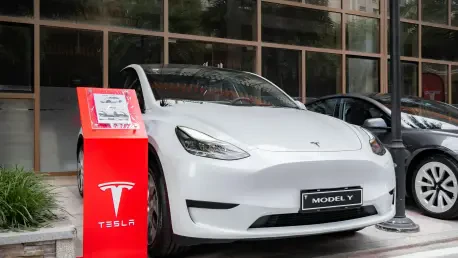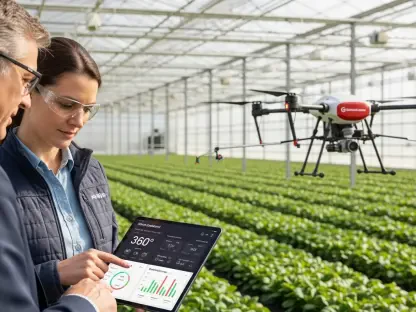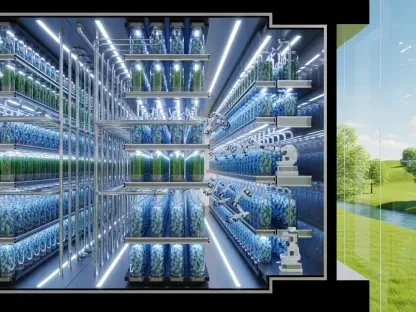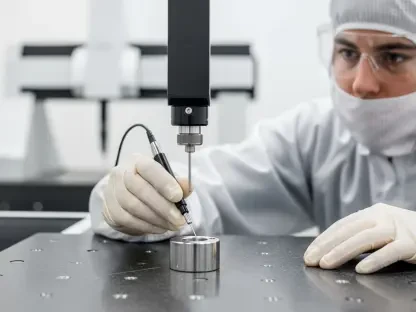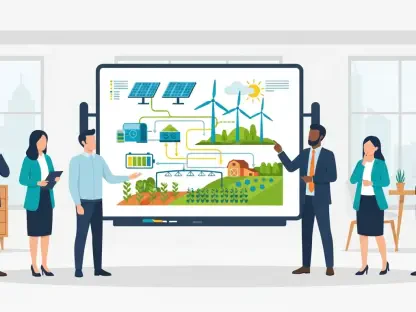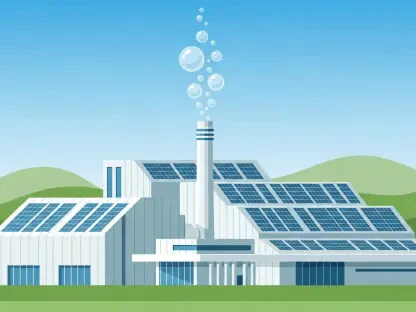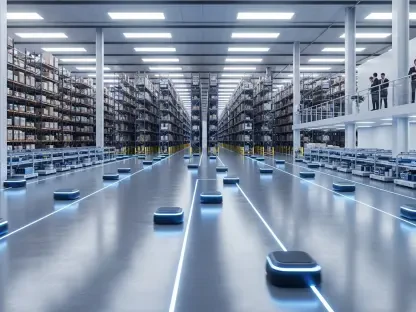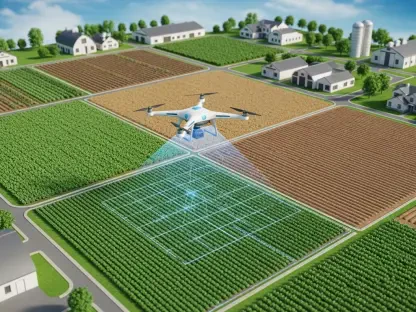In exploring the intricate process of how Tesla China perfects the manufacturing of the Model Y, it’s evident that their success hinges on advanced automation and rigorous quality control measures to ensure efficiency and precision in production.
In the fast-evolving landscape of electric vehicles (EVs), Tesla China has emerged as a powerhouse with its remarkable production of the Model Y L, an extended wheelbase, six-seat variant of the widely celebrated Model Y crossover. Operating from the sprawling Gigafactory Shanghai, this facility has become a benchmark for innovation, blending cutting-edge automation with scalability to meet soaring demand. The significance of this achievement extends beyond mere numbers; it reflects a transformative approach to manufacturing that could redefine industry standards. As market interest in the Model Y L surges, contributing significantly to Tesla China’s registrations, the question arises: what drives this precision and efficiency? This exploration delves into the heart of Tesla China’s operations, uncovering the strategies that enable such mastery while connecting these efforts to broader themes of sustainability and technological advancement. From robotic assembly lines to global market strategies, every facet of this journey showcases a commitment to pushing boundaries. The narrative also ties into parallel ventures under Elon Musk’s leadership, illustrating a cohesive vision for the future of mobility and beyond. Let’s unpack how Tesla China is setting the pace for EV production, offering insights into a process that balances immediate market needs with long-term aspirations.
The Power of Automation at Gigafactory Shanghai
Precision Through Robotic Systems
Tesla China’s ability to produce the Model Y L with such finesse at Gigafactory Shanghai hinges on an extraordinary level of automation that redefines manufacturing norms. A glimpse into the production line reveals a symphony of robotic systems meticulously assembling critical components, such as battery modules and third-row seats, with unparalleled accuracy. This isn’t merely about replacing human labor; it’s about achieving a consistency that ensures every vehicle rolling off the line meets stringent quality benchmarks. The seamless integration of these machines minimizes errors, streamlines workflows, and upholds Tesla’s reputation for excellence. Such precision is particularly vital for a specialized variant like the Model Y L, where additional seating and extended design demand exacting standards. This technological prowess serves as a cornerstone of Tesla China’s success, demonstrating how advanced systems can transform traditional production challenges into opportunities for innovation.
Beyond the technical marvel, this automation reflects a deeper philosophy of efficiency at Gigafactory Shanghai, where robotic systems are programmed to handle intricate tasks at a pace that manual labor could hardly match, ensuring that even the smallest details are executed flawlessly. This approach not only enhances the reliability of each Model Y but also builds consumer trust in Tesla’s ability to deliver high-quality vehicles consistently. Furthermore, it allows for real-time adjustments during production, adapting to potential issues without halting the entire process. The result is a manufacturing environment where precision isn’t an afterthought but an ingrained principle, setting a high bar for competitors in the EV space. This focus on robotic precision underscores Tesla China’s role as a leader in reimagining how vehicles are built.
Scalability for High Demand
Automation at Gigafactory Shanghai isn’t just a tool for precision; it’s a powerful enabler of scalability to meet the robust demand for the Model Y L. Tesla China has engineered its production lines to handle the output of this unique variant alongside the standard Model Y without compromising speed or quality. This adaptability is critical, as registration figures indicate a strong market appetite, with delivery timelines extending into late fall. The ability to ramp up production while maintaining efficiency showcases a well-oiled system designed for high-volume output. It’s a clear signal that Tesla China is not just reacting to market trends but anticipating and shaping them, positioning itself as a dominant force in the world’s largest EV market.
This scalability also speaks to strategic foresight in resource allocation and process optimization at the Shanghai facility. By integrating advanced automation, Tesla China ensures that increases in production don’t lead to bottlenecks or quality dips. Instead, the systems are calibrated to handle surges in demand seamlessly, balancing the complexities of manufacturing a specialized vehicle with the need for rapid delivery. This capability is especially significant given the competitive nature of the Chinese EV market, where speed to market can make or break a model’s success. The impressive registration numbers for the Model Y L reflect not just consumer interest but also Tesla China’s capacity to deliver on that interest without delay, reinforcing its reputation for operational excellence.
Broader Innovation Across Tesla and Beyond
Market Impact and Expansion in China
The Model Y L’s manufacturing triumph at Gigafactory Shanghai translates directly into a substantial market impact within China, a pivotal region for Tesla’s global strategy. Registration data from late September reveals that this variant accounts for nearly 20% of Tesla China’s weekly insurance registrations, with approximately 4,000 units recorded in a single week. Such figures highlight a robust consumer response, suggesting that the Model Y L is not just a niche offering but a significant driver of Tesla’s growth. With delivery estimates stretching into November, the variant is poised to bolster Tesla’s performance in the fourth quarter, cementing its stronghold in a highly competitive EV landscape. This success underscores how Tesla China aligns its production capabilities with market dynamics, ensuring that demand is met with supply in a timely manner.
Moreover, this market traction reflects Tesla China’s deep understanding of local consumer preferences and its ability to cater to them through tailored offerings like the Model Y L. The six-seat configuration appeals to families and those seeking additional space, tapping into a segment of the market hungry for versatile electric vehicles. This strategic product positioning, combined with efficient manufacturing, allows Tesla to capture a larger share of the Chinese EV market, where innovation and practicality are equally valued. The extended delivery timelines, while indicative of high demand, also signal confidence in Tesla China’s ability to sustain production momentum. This balance of market insight and operational strength illustrates why Tesla continues to lead in a region critical to the global EV industry.
Global Technological Advancements
Tesla’s innovation isn’t confined to the walls of Gigafactory Shanghai; it extends to groundbreaking technological advancements on a global scale, such as the potential rollout of Full Self-Driving (FSD) technology in Japan. Enabled by a progressive regulatory shift from the Japanese Ministry of Land, Infrastructure, Transport and Tourism, which now permits retrofitting autonomous driving features via over-the-air updates, Tesla is positioned to introduce FSD in a new market with relative ease. This development is a strategic win, showcasing how Tesla adapts its cutting-edge solutions to align with local policies while pushing the boundaries of automotive technology. It complements the manufacturing feats in China by highlighting a broader vision for mobility that transcends borders.
This global push also emphasizes the importance of software-driven innovation in Tesla’s portfolio, a stark contrast to the hardware-focused achievements at Gigafactory Shanghai. The ability to deploy Full Self-Driving (FSD) through updates rather than physical modifications represents a paradigm shift in how vehicles evolve post-purchase, offering consumers continuous improvements without the need for dealership visits. Industry observers note that such regulatory flexibility in Japan could set a precedent for other markets, accelerating the adoption of autonomous driving technologies worldwide. Tesla’s readiness to leverage this opportunity reflects a cohesive strategy where manufacturing excellence in one region supports technological expansion in another, creating a unified front for redefining transportation on a global scale.
Sustainability as a Core Principle
Environmental Focus in Manufacturing
At the heart of Tesla China’s operations at Gigafactory Shanghai lies a steadfast commitment to sustainability, a principle that shapes every aspect of Model Y L production. By focusing on electric vehicles, Tesla inherently contributes to reducing reliance on fossil fuels, a mission amplified by efficient manufacturing processes designed to minimize waste and energy consumption. The automated systems not only enhance precision but also optimize resource use, ensuring that the environmental footprint of each vehicle is as small as possible. This dedication to green practices aligns with Tesla’s overarching goal of accelerating the world’s transition to sustainable energy, making every Model Y L a step toward a cleaner future.
This environmental focus also manifests in the broader operational ethos at Gigafactory Shanghai, where sustainability is integrated into daily practices beyond just the product itself. Energy-efficient machinery and streamlined workflows reduce unnecessary power draw, while efforts to recycle materials within the production cycle further lessen the impact. Tesla China’s ability to maintain high output without sacrificing these green principles sets a powerful example for the industry, proving that profitability and environmental responsibility can coexist. As the EV market grows, this approach positions Tesla as a leader not just in innovation but in fostering a manufacturing model that prioritizes the planet, resonating with consumers who value eco-conscious brands.
Parallel Efforts in Water Conservation
Tesla’s commitment to sustainability extends well beyond vehicle production, as evidenced by parallel initiatives under Elon Musk’s ventures, such as xAI’s ambitious wastewater treatment facility in Memphis, Tennessee. With an investment of $80 million, this project aims to recycle up to 13 million gallons of greywater daily, conserving an estimated 5 billion gallons of potable water each year. This effort addresses a critical regional challenge by easing strain on local aquifers, demonstrating how private enterprises can tackle public utility issues with innovative solutions. It reflects a shared environmental ethos with Tesla’s mission, showing a multifaceted approach to sustainability across different sectors.
The significance of this water conservation initiative lies in its scale and collaborative nature, involving support from city officials and the Tennessee Valley Authority. Unlike Tesla China’s focus on reducing emissions through EV production, xAI’s project targets resource preservation, highlighting the diversity of sustainability challenges that Musk’s companies address. By funding such infrastructure privately, this venture sets a precedent for how industrial operations can support community needs while maintaining growth. This synergy between Tesla’s manufacturing practices and broader environmental projects like xAI’s facility underscores a comprehensive vision for a sustainable future, where innovation serves both business and societal goals in equal measure.
Pushing Boundaries with Visionary Projects
Space Exploration and Iterative Innovation
The innovative spirit driving Tesla China’s Model Y production at Gigafactory Shanghai finds a parallel in SpaceX’s Starship program, another venture under Elon Musk’s leadership that exemplifies boundary-pushing ambition. The recent transition from Starship V2 to V3, marked by rigorous testing of reentry dynamics and heat-shield durability, showcases a relentless pursuit of improvement. These tests, which intentionally stress the spacecraft by altering configurations, aim to refine technologies for future missions, potentially including Mars exploration. This iterative approach mirrors the constant enhancements seen in Tesla China’s manufacturing, where each process is fine-tuned for better outcomes, reflecting a unified strategy of progress across distinct fields.
This connection between space exploration and electric vehicle (EV) production lies in the shared methodology of testing and learning to achieve groundbreaking results. Just as Gigafactory Shanghai uses automation to perfect vehicle assembly, SpaceX employs experimental missions to gather data that informs the next generation of spacecraft. The ambition behind Starship V3, with its potential for interplanetary travel, parallels Tesla China’s drive to redefine automotive standards through the Model Y L. Both endeavors highlight a commitment to solving complex challenges through persistent innovation, ensuring that short-term achievements lay the groundwork for long-term, transformative impact in their respective industries.
Long-Term Thinking Across Ventures
A hallmark of the projects tied to Elon Musk’s vision, including Tesla China’s work at Gigafactory Shanghai, is an unwavering focus on long-term thinking that addresses future challenges today, ensuring that innovation remains at the forefront of their endeavors. The scalability of Model Y L production isn’t just about meeting current demand; it’s about building a foundation for sustained growth in the EV sector over the coming years. Similarly, SpaceX’s aspirations for Mars missions with Starship V3 look far beyond immediate objectives, envisioning a future where space travel becomes routine. This forward-looking mindset ensures that present successes contribute to broader, visionary goals that could reshape entire industries.
This emphasis on the future also bridges Tesla China’s achievements with other initiatives, creating a cohesive narrative of progress. While the Model Y L addresses today’s market needs with its innovative design and efficient production, parallel projects tackle tomorrow’s uncertainties, whether through space exploration or sustainable infrastructure. The ability to balance immediate operational wins, like rising registrations in China, with ambitious plans for planetary exploration or resource conservation reflects a strategic depth that sets these ventures apart. It’s a reminder that every step forward at Gigafactory Shanghai is part of a larger journey toward redefining what’s possible, ensuring lasting impact across multiple domains.
Regulatory Support and Market Adaptation
Embracing Software-Driven Progress
Regulatory adaptability has become a crucial enabler of Tesla’s global strategy, complementing the manufacturing excellence seen at Gigafactory Shanghai with opportunities for technological expansion. A notable example is Japan’s recent approval of retrofitting autonomous driving features through over-the-air software updates, a decision by the Ministry of Land, Infrastructure, Transport, and Tourism that paves the way for Tesla’s Full Self-Driving technology rollout. This regulatory shift streamlines the deployment of cutting-edge features, reducing barriers to innovation in the automotive sector. Industry leaders have hailed this flexibility as a game-changer, noting its potential to benefit not just Tesla but the broader industry by simplifying how updates are implemented.
The implications of this development extend far beyond Japan, offering a model for how governments can support software-driven advancements in traditional industries, and for Tesla, it means the ability to enhance vehicles post-sale without physical modifications. This ensures consumers receive the latest technologies seamlessly. This regulatory support aligns with the precision and scalability of Model Y production in China, as both rely on forward-thinking frameworks to maximize impact. By embracing such policies, Tesla can accelerate the adoption of autonomous driving features globally, reinforcing its position as a pioneer in mobility solutions while building on the operational strengths of facilities like Gigafactory Shanghai.
Balancing Local Needs with Global Goals
Tesla China’s success in manufacturing the Model Y L hinges on its ability to balance local market dynamics with overarching global objectives, a strategy evident in both production and regulatory navigation. In China, the strong demand for this variant, reflected in significant registration numbers and extended delivery timelines, is met with tailored production strategies at Gigafactory Shanghai that cater to regional preferences for spacious, family-oriented vehicles. Simultaneously, regulatory advancements in markets like Japan open new avenues for technological deployment, ensuring Tesla’s innovations reach diverse audiences. This dual focus demonstrates an agility that allows Tesla to address immediate needs while pursuing a worldwide vision for sustainable mobility.
This balance is further underscored by Tesla’s ability to adapt to varying regulatory landscapes without losing sight of its core mission. While Gigafactory Shanghai ramps up output to satisfy Chinese consumers, the company leverages policy shifts elsewhere to introduce features like Full Self-Driving (FSD), enhancing its global footprint. The synergy between meeting local demand and capitalizing on international opportunities ensures Tesla remains competitive across different regions. This approach not only strengthens market presence in key areas like China but also builds a robust platform for future growth, illustrating how localized efforts at facilities like Shanghai contribute to a unified strategy of innovation and sustainability on a global scale.
Reflecting on a Legacy of Innovation
Looking back, Tesla China’s mastery in manufacturing the Model Y L at Gigafactory Shanghai stood as a defining moment in the evolution of electric vehicle production, marking a significant milestone with seamless integration of automation for precision and scalability. The registration figures and delivery timelines underscored a profound market impact in China during that period. Parallel achievements, such as the push toward Full Self-Driving technology in Japan and sustainability initiatives like xAI’s water conservation project in Memphis, painted a picture of an enterprise deeply committed to transformative progress. Moving forward, the challenge lies in sustaining this momentum by further refining manufacturing processes and advocating for regulatory environments that foster innovation. Exploring partnerships with local governments and industries could amplify sustainability efforts, while continuous investment in automation technology might unlock even greater efficiencies. As Tesla China’s legacy of blending operational excellence with visionary goals continues to inspire, the focus should remain on integrating these lessons into future strategies, ensuring that each advancement builds toward a more connected, sustainable world of mobility.
